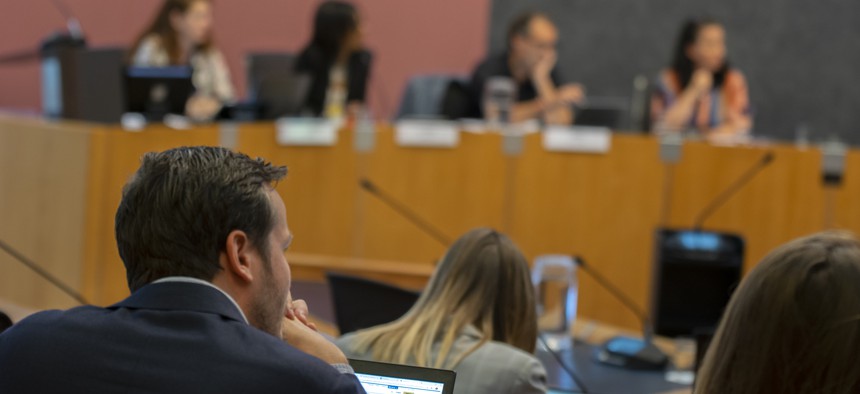How Governments Can Minimize Harassment of Public Officials

iStock.com/Robert vt Hoenderdaal
Complex factors are at play, including polarization, misinformation and social media. But there are safety measures localities can take to protect local leaders, according to the National League of Cities.
Recently, U.S. residents have increasingly resorted to anger, abuse and violence rather than discussing their problems and expressing differences accelerated by the Covid-19 pandemic, according to a report by the National League of Cities.
What should have been a moment of unity to fight against a global pandemic has devolved into a divide over getting vaccinated, wearing facemasks and police enforcement, the report says.
Rather than embracing those with opposing viewpoints, most of society views one another as enemies.
Root Causes of the Problem
The decline in civility and growth of harassment, threats and violence against public officials has been underway for decades, according to the report. There is a complex network of influential factors at play including polarization, the spread of misinformation and social media.
The inability to see those with different views as people has led to a rapid decline in civility, the NLC says.
Since the 2016 election, U.S. residents are more likely to actively endorse the idea of intergroup violence — aggressive behavior committed by one group against another intending to cause physical and/or psychological harm, according to the report.
However, this is not the first time the U.S. has experienced a surge in polarization. For example, in response to the 1960s civil rights movement and 1970s women’s rights movement, polarization grew around changing group status.
What Local Governments Can Do
Cities should work with their police departments to develop emergency strategies and improve intervention training for security officers in case an incident arises, the report states.
In the event of harassment, threats or violence, cities must be quick in evaluating and improving public safety measures to prevent violence against local officials and ensure the safety of their staff, the report also says.
To ensure safety, several cities have increased security presence at council meetings, installed metal detectors at entrances and installed ballistic glass in their city halls to protect local leaders from harm, according to the NLC.
Recommendations for Lessening Incidents
Here are recommendations that outline safety measures local leaders can take to address incidences of harassment, threats and violence, according to the report:
- Plan and focus on de-escalation: Improve training for police and security offices focused on de-escalation.
- Add security measures: Consider having local law enforcement or security present at council meetings and public city events.
- Make infrastructure adjustments: Consider making changes to meeting spaces to keep public officials and municipal staff safe.
- Conduct debriefings: Following meetings, make sure that relevant stakeholders engage in conversations.
- Prioritize mental health: Connect staff to mental health professionals and resources for individual treatment emphasizing the importance of prioritizing mental health and confidentiality of treatment.
- Develop guidelines: Develop a social media guideline or code of conduct for public officials to limit the spread of vitriolic language online and combat the spread of misinformation.
For more information from the NLC report click here.
Andre Claudio is the assistant editor for Route Fifty.
NEXT STORY: Storm Drains Keep Swallowing People During Floods





